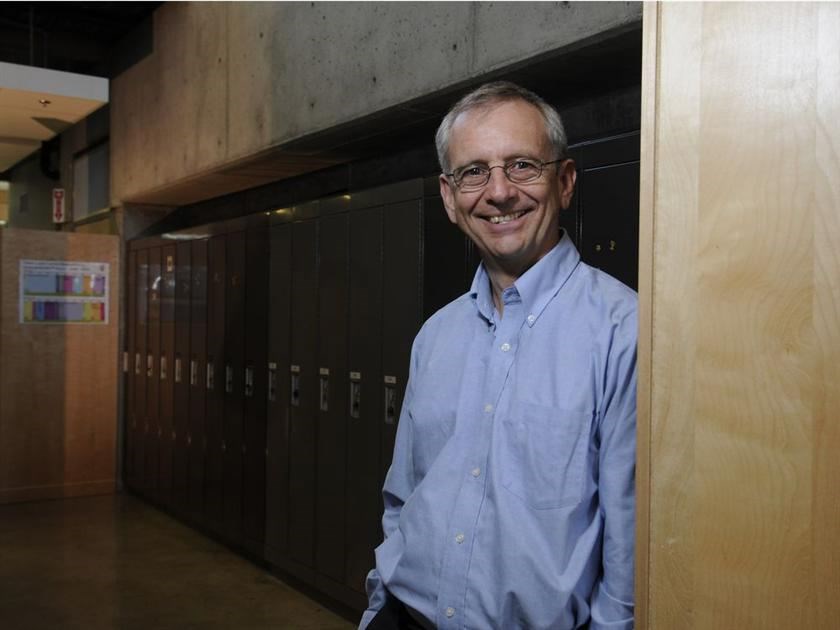If you have a stroke in Vancouver, you can be at Vancouver General Hospital in less than half an hour, receiving highly specialized medical care from on-site neurologists.
But what happens if you have a stroke in Dease Lake, a community of about 450 almost 1,000 kilometres northwest of Prince George, or you suffer a traumatic injury in the Eastern Kootenays that requires a higher level of care beyond what the local hospital can provide?
These are the questions Dr. Dave Snadden is keen to tackle in his new role as founding chair in rural health at the University of B.C.
"How does that patient get access to the same degree of expert care that would give us a good outcome?" said Snadden. "That, to me, is the challenge of rural health."
Snadden believes in the principle that British Columbians should have equitable access to health care, regardless of geography.
"Right now I would argue there isn't equitable access to care," said Snadden in his soft Scottish burr. "If you live in a rural area, your chances on average (are) that you are going to live a few years less than someone in the Lower Mainland. Are we OK with that as British Columbians? I don't think we should be."
The Rural Co-ordination Centre of B.C., which works on behalf of the Joint Standing Committee on Rural Issues (a partnership between the ministry of health and Doctors of B.C.), has been advocating for the creation of the rural health chair because it saw the need for rural areas to have a champion.
Co-ordination centre communications manager Sharon Mah noted 25 per cent of British Columbians live in rural areas, yet only 15 per cent of doctors practice in rural settings: "They're under-represented," she said.
Studies also show people in rural communities tend to have poorer health outcomes than urban dwellers.
Snadden's new position - a three-year-term that started Nov. 1 and is based out of Prince George - is funded through a $5 million endowment from the joint standing committee, with annual operational funding of $350,000 provided over the next five years to support the creation of a provincial network of rural health researchers.
The chair is an academic role, but Snadden plans to use the position to be a vocal advocate for rural health, raise awareness about its challenges, and develop real life solutions to improve care for the province's rural residents.
The 62-year-old spent the summer months visiting communities in rural B.C., Yukon and the Northwest Territories for a research project, interviewing 46 doctors and nurses for a better understanding of the issues that occur in rural practice.
His particular passion is the recruitment and retention of rural physicians, an ongoing struggle for many small communities.
There has been some improvement: Between 2005 and 2013, the number of rural doctors rose from 1,294 to 1,582, a 22 per cent increase, according to a 2015 health ministry policy paper. Early data from the Northern Medical Program, a distributed UBC medical program based at the University of Northern B.C. that Snadden helped establish, also show the majority of its graduates go into family medicine, and into rural communities.
But many seeming-stable communities are only one retiring doctor away from a crisis, noted Snadden, who was previously executive associate dean in education for UBC's Faculty of Medicine.
"(Rural doctors) are a remarkably skilled group of physicians in a practice I don't think is widely understood," he said. "They have to be ready to deal with anything. Some work in remote areas with limited access; they see major trauma, acute illness."
What Snadden hopes to do is to find ways to better support these doctors, and create a vibrant practice environment for them.
He sees an expansion in the role of technology such as Telehealth, which enables access to specialists via live video conferencing. More work needs to be done to improve the speedy transfer of critical patients out of remote communities to get the help they need, he added. There needs to be more flexible arrangements, and multi-disciplinary teams that can offer support to each other.
Whatever the solutions could be, Snadden believes the answers will be found in the communities.
"Often the answer will be local ones," he said. "It's a great temptation to come up with a provincial policy that will fix the problem. But what we are seeing is that the best solutions are the ones the community create themselves."



